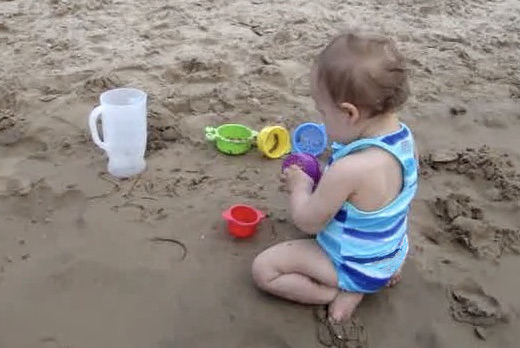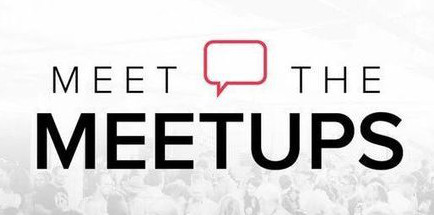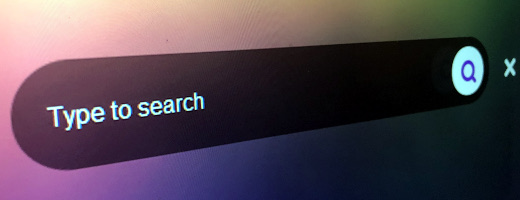Define The Sandbox For Me To Play In

“Define the sandbox for me to play in.”
This is a phrase I find myself saying more and more. It is something I have said in the past on occasion, but now it is creeping into my speech with greater frequency.
“The sandbox” I refer to comes from the childhood play thing – a literal box or tray, perhaps a half a foot in depth and a yard square, filled with sand that infants or toddlers would play in. This confined area is designed to keep the sand and the child in a defined space, all the while still allowing them to be creative and have fun.
Later in life the analogy of the sandbox would come into play (pun intended) in my chosen career of software development. Here, a sandbox is an isolated system of servers, network, software and end-user computers and mobile devices where development and experimentation can go on without impacting live software. Though there’s no sand in a technology sandbox, it can easily be as messy.
Thinking Inside and Outside The Box
Many years have passed since my early playing and I have been in all sorts of environments – business, volunteering, social, among others. I have invoked this metaphor of the sandbox as the definition of the overall boundaries or rules of engagement with whatever endeavor I am involved with. In raising this, I am asking for these parameters to be defined, upfront and complete, so I know the limits I am to work within.
In asking for the sandbox definition, I am not looking to limit what I can do. It’s actually the opposite; I want to know the boundaries so I can push them to the limits. When you think about it, there are limits in some way, shape or form in most aspects of life. There’s laws, regulations, policies, traditions, norms, emotions, budgets, physical space, time and design guidelines to name a few. If they exist, let me know them going into whatever I am going to do, so rather than being a hindrance, they are taken into consideration in my planning and actions.
Define your sand-what?
When I speak this phrase – and I find it most effective when spoken – it is often met with puzzlement. What I am asking for is not only something that is not often asked for, but the answer may not even exist, or exist in a form beneficial to myself and others. I am not a perfectionist, and I am not asking for the perfect sandbox either. In some cases, I get various documents or a conversation with someone. When this happens, I try to document what information I have received and as a result am defining the sandbox from these materials. When I do this it is met with some apprehension, especially from those who don’t want to commit or acknowledge the sandbox I have just defined from them.
It’s all play until someone pokes an eye out
Running up against the definition of the sandbox has had both positive and negative results for me in the past.
One time I felt I knew definition of the sandbox, only to find out I didn’t, which had a big impact on my work and emotions. I had to create the technical components of a presentation on a topic, with others creating the other supporting materials. The presentation was short, and I knew I was not going to be able to discuss all aspects of it, so I included external resources for the participants to explore further after the presentation. These resources were Web sites that are known for their leadership on the topic and ones I use myself. However, the day before the presentation, all but one of the links I included was struck from it by the firm’s legal counsel.
Why? They said the sites they had an issue with were run by organizations that also offered consulting services, and by including them it could be implied that the firm were endorsing these vendors. As the firm had strict policies on endorsing vendors, which I found out only as a result of this presentation, these links had to be removed. Period. When I pushed back the lawyers wouldn’t let me finish my sentence.
With the presentation so close, I had no time to find other links to include – I had the best of them, and would have to vet their information thoroughly, as well as ensure they were not offered by someone who was also consulting. So my slide had one link, the one at the bottom of the list, which I had included simply as a reference site. The presentation went on and caused confusion in the mind of some participants, and some told me this. Had I known about this endorsement policy going into it, I would have had plenty of time to rethink my material overall, from what I wrote to what I linked to. But I didn’t, and I couldn’t, and had no fun playing in this tiny sandbox this time.
A more positive example of pushing the limits of a sandbox is when I moved for a more prominent search function on an Intranet portal project I wrote about recently. Even though in this case I didn’t have the full definition of the sandbox in the form of lack of support from my director, I had the confidence that leadership would approve of this change, which they did. Even if it had not been approved, my team and I felt the effort to play to the edge of the sandbox was worth it.
Do you want to play a game?
Even with the sandbox defined for you, it is ultimately up to you if you want to play in it. Though I don’t remember specifically, I bet there were times when I would crawl or jump out of the sandbox as a child. If you do choose to play in it, be aware that on some occasions the sandbox definition may change while you are playing, and this can also trigger a decision point if you want to continue playing or move on.
The decision not to play can be unfortunate for both the person who could have played in it and for the sandbox owner as well. For the owner it can, if they accept it, create a learning moment. Typically a sandbox is there for someone to play with. But what if nobody wants to play in it? The owner – the employer, organization, what have you – has a decision to make. Do they have a sandbox nobody wants to play in?
Deconstructing Defining Sandboxes
I hope the metaphor of a sandbox resonated with your and did not distract from my overall points. In any endeavor there are boundaries. Knowing what they are going into it will make the activity smoother. Changing or just disclosing boundaries late in the process can cause disruption to all involved with the endeavor and can have repercussions to the individuals – the players – and the organization – the sandbox owner.
This is from The Hot Iron, a journal on business and technology by Mike Maddaloni.
Did you enjoy this? Subscribe to The Hot Iron by RSS/XML feed or Read by Email
Business • Strategize • Thrive • (0) Comments • PermalinkThirteen Years Of Blogging At The Hot Iron

Where I am in no hurry for my own children to become teenagers, something else in my life has reached that milestone – this blog.
Over the last 13 years I have used The Hot Iron as a platform for whatever is on my mind. In the beginning it was more frequent, and over time it has not been as much. Interestingly as I am writing this post I went back to the archives to see how many times I wrote here in 2019 as it seemed like more than in recent years, but that wasn’t the case. Perhaps I was just thinking about it more this year?
If you are reading this, you are one of the few and much-appreciated people who have stuck with me for some time to read this, and for this I am very grateful. I gave up years ago on making promises for writing more, but I have not given up completely on this site.
As this will be my last post for the year, may the new decade beginning on January 1, 2020 be a time where all that you want becomes real!
This is from The Hot Iron, a journal on business and technology by Mike Maddaloni.
Did you enjoy this? Subscribe to The Hot Iron by RSS/XML feed or Read by Email
Announcements • Thrive • (1) Comments • PermalinkBusiness and Technology Networking in Northeast Wisconsin

A few weeks ago I attended what I will call a "meta meetup" – it was a showcase of business and technology meetup networking groups in Northeast Wisconsin. The event was called Meet the Meetups and was a local version of a similar event held in the Milwaukee area.
Following the event I reached out to the organizers and shared with them how I wished something like this took place a couple of years ago when I moved to the area. My quest for such groups when I first arrived here was nowhere near as bountiful as what I encountered at this gathering in Green Bay.
As one of my goals for the coming year is to immerse myself more in technology – both in general and local – I am sharing this list of meetup groups here. Perhaps it can help someone looking now as I did then, and perhaps I will see you at one of their events?
Rising Tide Society / Tuesday's Together
BAM (Big Data, Advanced Analytics, and Machine Learning)
Women In Entrepreneurship - Northeast Wisconsin
Current - Young Professionals (Green Bay Chamber)
Northeast Wisconsin Cloud Users Group
Northeast Wisconsin Agile Users Group
Fox Valley Business Data Intelligence and Analytics
Fox Valley Microsoft Data Platform
Northeast Wisconsin Developers Users Group
Fox Valley Sharepoint User Group
I would like to share one that was not at this event, but is also a worthwhile networking and learning opportunity. Women in Technology Wisconsin hosts monthly events and networking, and is not only for women – I know, I have attended one of their events.
If you know of other networking opportunities in Northeast Wisconsin for business and technology, please share them in the comments of this post.
This is from The Hot Iron, a journal on business and technology by Mike Maddaloni.
Did you enjoy this? Subscribe to The Hot Iron by RSS/XML feed or Read by Email
Announcements • Business • Technology • Thrive • (1) Comments • PermalinkNo Pictures But It Did Happen

There’s a phrase I see often on the little bit of remaining social media I use – “pictures or it didn’t happen.” It stems from claims that people make in these social channels, and people asking for photographic proof as they don’t believe those claims. However, I am here to say that it’s ok to not always have those pictures.
As I was driving home late last night in the rain from Milwaukee, Wisconsin (about a 1.5 hour ride) I realized I did not get a picture with my cousin whom I went there to meet. He was in the Cream City for a conference, and I wanted to get together with him as he was so close. We met up and went to dinner and had some great beer at a brewpub just next to the new arena downtown and had a nice time. After I dropped him off at his hotel, I got some coffee for the road and headed home.
It was in the process of keeping my mind off of the rain – and on the road – that I realized there was no picture of us; no selfie, and didn’t even ask our friendly waitress to take a picture. It wasn’t that we didn’t have a good time – we talked of the conference he was here for, tech, healthcare, beer, all good. We both had our phones with operating cameras on them, and it wasn’t even that I didn’t take any pictures last night – see above for the huge bowl of cole slaw that came with my brat burger, as I had never seen a serving of cole slaw that large, ever.
This is not the first time I have done something that could be considered a “Kodak moment” and didn’t capture it... yes, I am a Gen Xer and I remember that term well. Being in that age range probably means why I am not always “on” taking pictures, especially with my conscious effort to be on less social media channels and use the ones I am still on less often. Then there is the “management” of these pictures, for lack of a better term. What do you do with all of the photos you take? And what about the ones you may have taken in the dark ages with actual film? My guess is the boxes of photos and albums you have are similar to what I have.
Over the summer my family took a road trip West and went to Mount Rushmore. I was in awe of seeing the mountain carvings in person that I have seen in photos since I was a child. The pictures I took were great, especially with the family, but they didn’t quite match the magnitude and emotion I felt seeing it for myself. For me that’s ok, as I have my memories of that August night to go with those pictures to make for a complete experience.
As I was mulling all of this over in the ride home, I recalled an article by Derek Sivers where he talked about traveling without a smartphone altogether. Where he couldn’t take any pictures or use GPS for maps, he felt he remembered his time more without the device, and what it offered as well as what it could take away from the moment. Where I don’t think I would consciously do this, it at least made me feel better about the one picture I don’t have of the many thousands of pictures I do have.
By the way I highly recommend the cole slaw there; it’s made with red peppers.
Deconstructing Not Taking A Picture
In our constantly-connected world, moments when we are not stand out. If the fact that we weren’t connected didn’t distract from the life experience, then that’s ok. There are other ways to “capture the moment” such as recounting it to others, or even writing a blog post about it.
This is from The Hot Iron, a journal on business and technology by Mike Maddaloni.
Did you enjoy this? Subscribe to The Hot Iron by RSS/XML feed or Read by Email
Blogging • Diversions • Thrive • (2) Comments • PermalinkLiterally Promoting Search in 1999

It’s been said if you can’t find anything on the Web by searching for it, it may as well not even exist. Since Google’s launch over 20 years ago that has certainly been the mantra, as their single search box with precise search results trumped all other search engines out there to become the dominant search destination it is today.
Around that same time, I felt the same about search, but on a slightly smaller scale, though with an international reach. I was literally promoting search for the Intranet portal for a global professional services firm in 1999.
Search Hidden and With Good Reason
In 1999 I became the manager of the front-end development team for this portal, which meant I was responsible for leading the team creating and enhancing its Web pages. As part of the role, I had to evaluate the functionality and design we had already, as the portal was being developed by a consulting team that was rolling off the project. When I evaluated the search function, by my best approximation it was poor to non-functional and of no value to anyone using it.
As I quickly came to learn, search was not a priority for the portal. The business sponsors didn’t even want people to simply search for content, rather to use a complex, nested set of 3 drop-down lists to select a category for which content would be presented. If that sounds convoluted, it was. The categories, or taxonomy, mirrored the structure of the firm. The idea was you would navigate to where you “worked” and voila, there would be content waiting for you.
Or so one would think, however this wasn’t always the case. Many times there wasn’t any content there, especially in the early days to months of the portal. But that wasn’t that my concern, as we had an entire other team working on getting content into the portal. The concern for my team and I was to ensure the front-end of the portal worked and was usable.
There was no real urgency to make search function well and have a great user experience as accessing it, as it was literally tucked behind an unlabeled icon of a magnifying glass on the second page of the portal, one you would miss on first glance. There was an option on the first page of the portal prominently labeled search, but it simply led users to a list of public Internet search engines, such as Lycos and Yahoo. Remember, this was 1999.
A Better Way to Content
After the launch of the portal, we decided to tackle search. The task of working on the search engine went to our top developer. He had both a programming and mathematics background, and was eager to get search working. After some time, he was successful, and it was a highly functional and useful feature of the portal, though most people still didn’t know about it. We added a text label to the search icon and others near it where it wasn’t obvious what their functions were. Even then, you had to click the icon which took you to another page where you got a search box, adding steps (aka barriers) to get to the content you want. Over time we found that portal users were using search, and we on the development team used it to validate testing for content. Even with this new label, search was still not a prominent feature on the site, nowhere to the degree I felt it should be.
Making the Case for Search and navigation
With the initial launch of the portal and other changes including the search function behind us, it was on to version 2.0. There was a laundry list of features wanted for the portal, and one was a new user interface. As my team worked through designs and functionality, they proposed putting a search box in a prominent position on the Web site, at the top left corner, literally promoting it from obscurity. Studies of people using Web pages have shown consistently over the years people start at the top, go across the top and down the left side. By placing the search box and button at the top left, there was no extra step needed to get to search results.
I was pleased with the work and designs we put together, and then we started the process of presenting it up the food chain of the leadership for review and approval. We knew we would have tweaks and adjustments to make, but we were hopeful much of the work we did would persist, especially search.
When we presented it to the director of the development team, my direct manager, he liked it. The next step was to present it to his manager, who was the overall director of technology. But he didn’t like it. He felt it went against the goal of navigating to content and wouldn’t be approved by the top leadership of the team. We pointed out the 3 drop-down lists remained, and people could still choose to use them, as well as the work we did to improve the search function. My director was also reinforcing this, from a usability standpoint, so the busy consultants in the field could get to the content they wanted. After hesitation he agreed we could present the search box design to senior leadership but that he would not back us up on it. This was fine by me, as myself and my director would be the ones presenting it.
Shortly after this less than exciting meeting, we had the meeting with the senior leadership and business leaders for the portal to present our proposals for version 2.0. We were in a beautiful and expensive conference room with cutting-edge functionality, very expensive for that time. We had an orchestrated presentation where myself and my peers would be presenting their team’s work on the next version of the portal, with the onus on me to present the new design and the search box.
When it was my turn, I was ready – the design was cleaner and more modern, at least for standards of that time. As I presented it, I talked to the major features in priority order, and search was near the middle of it. When I brought it up, I talked to the search improvements we made, the gain in traffic to the search page and how users could still navigate to it as they have before. As I finished saying this, I saw the director of the technology literally turn away from the table, though I don’t think anyone else noticed it. As I concluded the lead partner who oversaw the entire portal looked down, and I could tell he was thinking it over. He said he liked it. Relief doesn’t begin to describe the feeling I had, and I was excited for the meeting to end to share the great news with the team.
Another Search Goal Fulfilled Years Later
As we worked on version 2.0, we did a lot of talking about the future of the portal and how it could be enhanced. I had the idea of putting a “header” or section on the pages of other portals within the firm. This header would be a thin bar across the top of the page with links back to our portal as well as a search box. It was an idea that was batted around my team, but one I was not there to even take to any design phase, for not long after version 2.0 was released, I left the firm, being lured by a dot-com startup that folded a mere half-year later (and a topic for another time).
About a half-dozen years later, my wife got a job with this same firm, but working with a consulting practice. In between those years the portal itself had gone through significant change, namely not being the focal point for the firm it was previously. One night as she was catching up on some work at home, I looked over her shoulder to see what she was doing. Much to my surprise she was on a page of the firm’s Intranet, where our portal had lived, and across the top of the page she was on was a header bar similar to what I just described. Needless to say it made me smile, and I was patting myself on the back as I walked away.
Deconstructing Promoting Search
Technology and the way we interface with it is always changing. New ideas must be encouraged, embraced and tested to truly see their effectiveness. Search is one of those areas, and its importance is even more important today. In this case the functionality of the search box was not the innovation, rather promoting it to a position of prominence on the Web pages. Where I cannot take credit for the design of the header bar that evolved over time, it in itself was an evolution of what we started with and presented with mixed results now over 20 years ago.
This is from The Hot Iron, a journal on business and technology by Mike Maddaloni.
Did you enjoy this? Subscribe to The Hot Iron by RSS/XML feed or Read by Email
Business •
Strategize •
Technology •
Thrive •
Web Design •
(1) Comments •
Permalink

